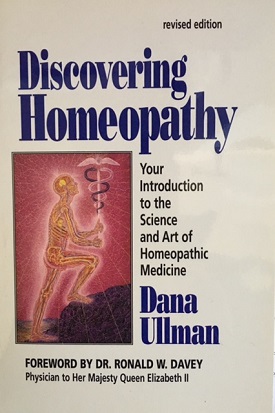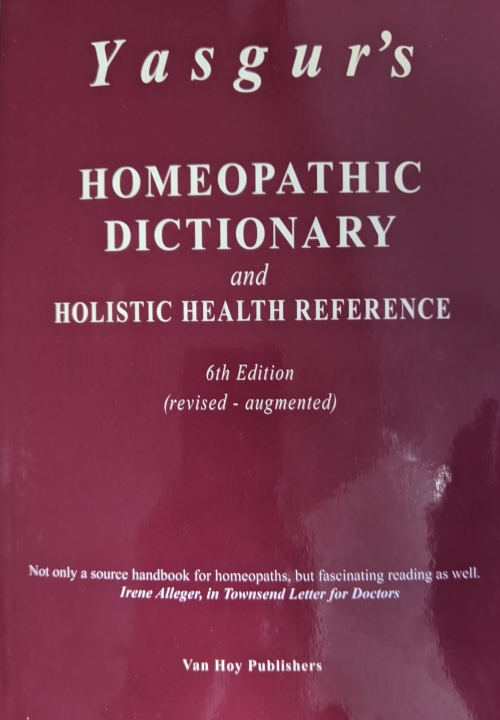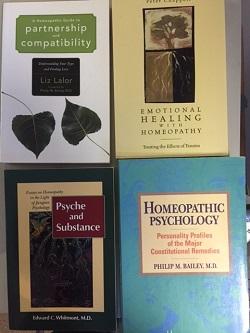Studies of Homeopathic Remedies by DR. D.M. GIBSON [#GIBSTU]
$43.00
Description
One of the most important materia medica, this book provides information in a highly systematic manner on 100+ medicines, describing the appearance, psychology, toxicology, physiology, symptomatology, and pharmacology of each medicine. He also references the source of the medicine and its historical uses from both the empirical applications and mythical traditions. 537pp.
This book review is reprinted from the British Homoeopathic Journal Volume 76, Number 4, October 1987, with permission from Peter Fisher, Editor.
British Homoeopathic Journal,
2 Powis Place, London
WC1N 3HT, U.K.
This large, comprehensive and important text is based on articles appearing under the same title in this Journal between 1963 and 1977. Now more easily and permanently available, they will, I feel confident, be read by a large readership over the English speaking world.
The author was born in 1888, studied at St Thomas’ Hospital, became a surgeon and served for twenty seven years as a missionary in China; a career which only ended consequent to the outbreak of the Second World War. He died in 1977.
Fortunately a second career evolved when he was introduced to the homoeopathic materia medica in 1936, blossoming when he came to work in the London Homoeopathic Hospital a decade later. He subsequently became a member of staff and practised privately in London.
Of an age when a classical education was considered usual, his clinical acumen was honed amidst the panorama of the multiple acute and chronic pathology of the East; his acumen was also wide in homoeopathy, including as it did National Health and private practice. Such learning shines throughout his writing and draws the reader unconsciously from one remedy to each succeeding one, with equal ease of assimilation.
The book, printed at the University Press, Oxford, is 537 pages long with a soft binding in dark maroon, the main title in gold and subsidiaries in white. Its considerable presence looks aesthetically pleasing both on desk and bookshelf. Content consists of a detailed preface, biographical and descriptive, one hundred remedies, an appendix and index of remedies. Each remedy is described under source, pharmacology, proving, appearance, psychology, physiology and symptomatology-general, also head, eyes, ears; the following systems: respiratory, alimentary, cardiovascular, urinary, genital, nervous, locomotor, skin; modalities and clinical notes.
Sections on source and pharmacology are given in considerable detail, and this is helpful in comparing the remedy in material and potentized form. The author states ‘These parallels and correspondence are sufficiently numerous and striking to deserve mention, as well as being an aid to the understanding and memorizing of the materia medica picture of each remedy’.
Modalities include useful food aversions and desires; under proving, where the original is by Hahnemann, such is given, and edition where necessary; in clinical notes, relationships are given.
Originally remedies were presented in groups, and these are given in the appendix.
Four nosodes have been added, using the same method of presentation. These are Carcinosin, Medorrhinum, Syphilinum and Tuberculinum. The section on Carcinosin includes details of new varients, early provings and a bibliography.
This is a classic text in which author, editors and publishers have proved equally worthy of each other. It will assist the neophyte and established homoeopath equally in becoming more competent and reliable prescribers, thus furthering the cause of homoeopathy.
Homoeopathic remedies come from every part of the world and from all the kingdoms of nature – mineral, vegetable, animal and microbe. They include strong poisons such as arsenic, the venom of deadly snakes and the products of disease, as well as harmless substances like sand and charcoal, and herbs whose healing properties have been handed down through generations and are celebrated in history and legend.
Dr Douglas Gibson (1888-1977) was a distinguished homoeopath who recognised the importance of knowing the materia medica in depth. These studies of remedies, first published in the British Homoeopathic Journal over the period 1963-1977, combine the panorama of each remedy with a faithful description of the mental and physical symptoms it elicits from a sensitive prover. The whole remedy is indeed used to treat the whole patient.
His studies are edited here for publication in book form. They differ from any previously published materia medica in the uniquely wide range of insights that are brought to bear on each remedy. They will be of great practical value, and a source of pleasure and stimulation, to the homoeopathic clinician.
Dr Gibson studied medicine at St Thomas’ Hospital, London, subsequently taking the Edinburgh FRCS. After many years as a medical missionary in China he came to study homoeopathy at the Royal London Homoeopathic Hospital, where he became first a Member and then a Fellow of the Faculty of Homoeopathy. Dr Marianne Harling and Dr Brian Kaplan are practising homoeopathic doctors.
TABLE OF CONTENTS
REMEDIES
Aconite, Agaricus, Alumina, Ambra Grisea, Ammonium Carbonicum, Anacardium, Antimonium Crudum, Antimonium Tartaricum, Apis, Argentum Nitricum, Arnica, Arsenicum Album, Arum Triphyllum, Aurum Metallicum, Baptisia, Baryta Carbonica, Belladonna, Berberis, Bromium, Bryonia, Cactus, Calcarea Carbonica, Calcarea Fluorica, Calcarea Phosphorica, Cannabis, Cantharis, Carbo Vegetabilis, Carcinosin, Causticum, Chamomilla, Chelidonium, Cicuta Virosa, Cimicifuga, Cina, Cinchona, Cocculus, Coffea Cruda, Colchicum, Colocynthis, Conium, Cuprum Metallicum, Drosera, Dulcamara, Gelsemium, Graphites, Helleborus Niger, Hepar Sulphuris, Hyoscyamus, Hypericum, Ignatia, Iodum, Ipecacuanha, Kali Bichromicum, Kali Carbonicum, Kreosotum, Lac Caninum, Lachesis, Latrodectus, Ledum, Lilium Tigrinum, Lycopodium, Magnesia Phosphorica, Medorrhinum, Mercurius, Mezereum, Muriatic Acid, Natrum Muriaticum, Natrum Sulphuricum, Nitric Acid, Nux Vomica, Opium, Phosphoric Acid, Phosphorus, Phytolacca, Picric Acid, Platinum Metallicum, Plumbum Metallicum, Psorinum, Pulsatilla, Pyrogenium, Ranunculus Bulbosus, Rhododendron, Rhus Toxicodendron, Ruta, Sabina, Sanguinaria, Secale Cornutum, Sepia, Silica, Spigelia, Spongia Tosta, Staphysagria, Stramonium, Sulphur, Syphilinum, Tarentula Hispica, Thuja, Tuberculinum, Veratrum Album, Zincum Metallicum
EACH REMEDY IS DESCRIBED UNDER A NUMBER OF DIFFERENT HEADINGS
1. SOURCE — The Source gives the origin and nature of the remedy, whether plant, animal or mineral; and then a description of it and its ecology, not only with regard to the physical world, but also in myth, literature and history. Sometimes Dr Gibson draws a parallel between the external characteristics of the source material and the mental and physical symptoms that make up the drug picture of the remedy. He does this, not to suggest a causal relationship or philosophical principle, but because ‘these parallels and correspondences are sufficiently numerous and striking to deserve mention, as well as being an aid to the understanding and memorising of the materia medica picture of each remedy.’
2. PHARMACOLOGY — The gross chemical effects produced by the remedy in its natural state before potentisation.
3. PROVING — A reference to the earliest published proving of the remedy.
4. The GENERAL PHYSICAL APPEARANCE is described, together with mannerisms, gait, etc. This section examines the fact that people of a certain build and temperament have been found to be sensitive to some remedies, and that they can respond well to those remedies in a clinical situation.
5. PSYCHOLOGY — Covers the mental and emotional symptoms which form part of the remedy picture. These can range from traits of personality to symptoms of toxic psychosis.
6. PHYSIOLOGY — Refers to general symptoms such as patterns of sleep, food likes and dislikes, reactions to climate, etc.
7. SYMPTOMATOLOGY — Describes particular symptoms relating to the different systems of the body, listed in the order used by homoeopaths; Modalities are included here.
8. CLINICAL NOTES — Details of dosage and treatment, relationships of remedies, and otherwise unclassifiable items of interest.






Reviews
There are no reviews yet.